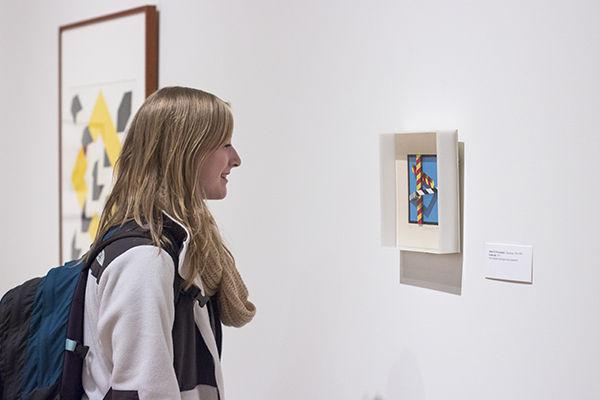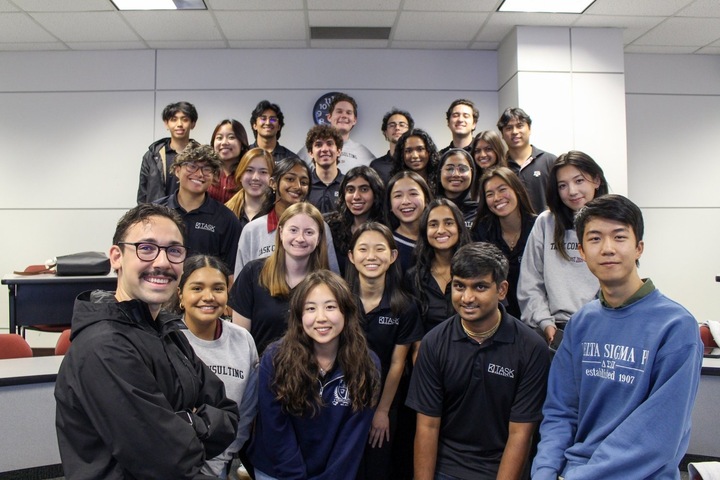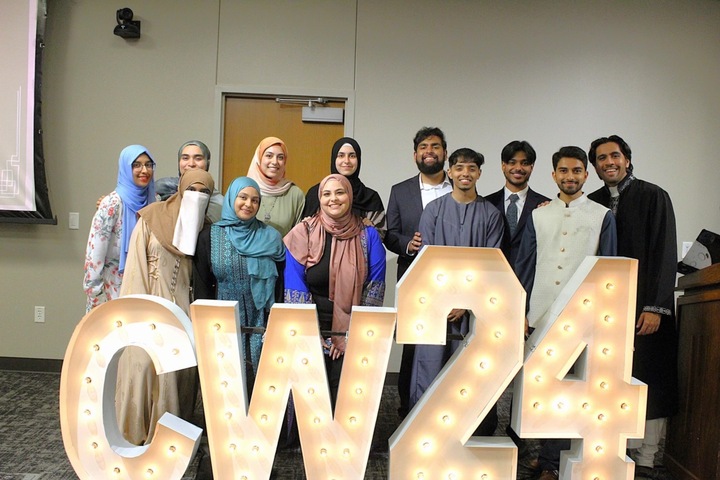From minimalism to pop art, the Drawn to Abstraction exhibit in the MSC Stark Galleries displays artists pushing boundaries in a post-war society.
“The works in this exhibition were produced in the 1960s and 1970s,” said Catherine Hastedt, curator and director of the Stark Galleries. “Beneath the nation’s confidence and commercialism, these artists sensed repressed anxieties toward the destructive potential of new weapons, rising Cold War tensions and a sense that American society was losing touch with a spiritual core.”
Amanda Cagle, collections manager for Stark Galleries, said these pieces are a critical, evolutionary step in 20th century art because they shifted how people looked at art.
“The idea of abstract art was so unusual when it first came out, and it took on so many different kinds of interpretations just within the abstract genre,” Cagle said. “From a quick glance, you might not be able to see the difference, they all look like general abstract art. But then you look closer, look at the content, and you really start to see where they were going with this.”
Hastedt said the exhibit came from the Kalamazoo Institute of Arts in Michigan. Unlike previous shows at A&M, this exhibit looks in-depth at a time period in America that has not been explored before.
“As always, the Stark Galleries tries to bring in exhibitions that tie in to the university’s curriculum in some manner,” Hastedt said. “This exhibition allows us to talk about printing techniques. It also gives students access to works by very famous artists that they would have to travel to a major city like Houston to see.”
Lynn McDaniel, communication specialist of the Stark Galleries, said different elements of the exhibit will appeal to different people.
“If you don’t care for that style of art, then maybe the colors appeal to you, or the movement appeals to you, and that’s okay, too,” McDaniel said. “We just want people to come down and experience and see if they like it or if they don’t like it, and come back and see the different styles. Maybe that’ll pique their interest to find out, ‘Why were there multiple artists during this time period?’”
Cagle said the question, “Why is this art?” is a question they are often asked.
“A museum doesn’t have to be pretty art, it’s supposed to inspire emotion,” Cagle said. “If you’re not feeling something, then you’re probably not here long enough.”
The exhibit will remain open until March 29. The galleries are open Tuesday to Sunday and admission is free.
Post-war artists push societal boundaries in Stark Galleries
February 24, 2015

Allison Bradshaw — THE BATTALION
Nutrition senior Rachel Bishop observes a piece of artwork by Allan M. Arcangelo in the “Drawn to Abstraction” exhibit in the MSC Stark Galleries.
0
Donate to The Battalion
$2065
$5000
Contributed
Our Goal
Your donation will support the student journalists of Texas A&M University - College Station. Your contribution will allow us to purchase equipment and cover our annual website hosting costs, in addition to paying freelance staffers for their work, travel costs for coverage and more!
More to Discover









